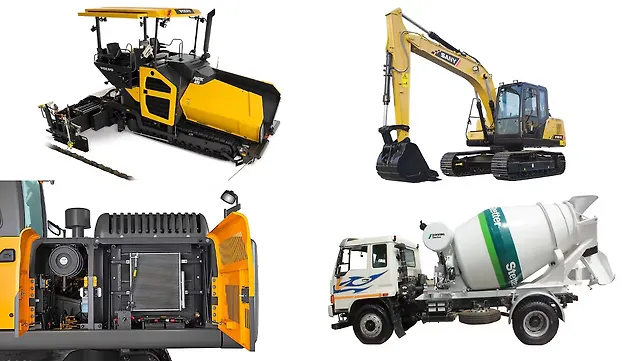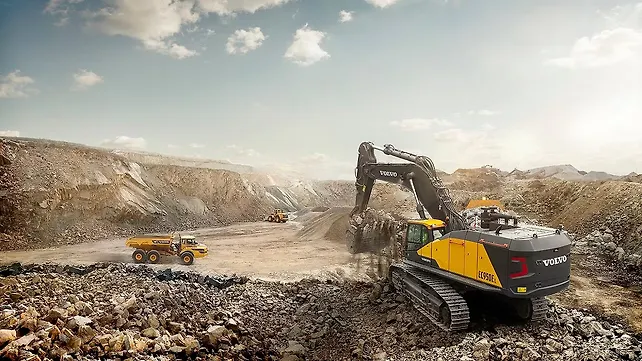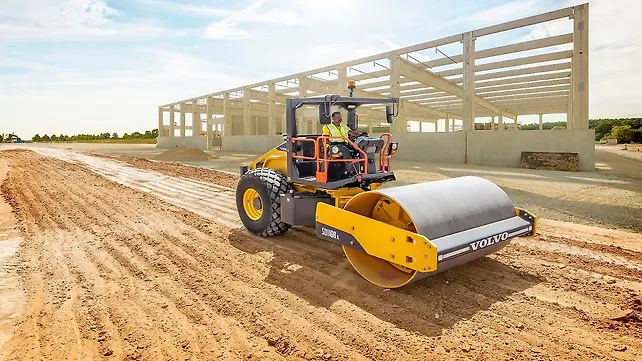
The construction equipment industry in India seems to be going through a rough patch as the same reported sales degrowth of 23% for the third quarter of 2021-22 YoY. Only 22,630 units of construction equipment were sold during this quarter which is approximately 8,000 units less than the number sold in Q3FY21.
Dimitrov Krishnan, ICEMA President and Volvo Construction Managing Director, in a recent report published by the Indian Construction Equipment Manufacturers Association (ICEMA), pointed out that the construction equipment industry is now witnessing recovery and growth due to the government’s continuous push for infrastructure development in the country. EXCON 2022, scheduled from 17 May 2022 to 21 May 2022, will also try to uplift the industry by enabling construction equipment heavyweights to showcase the latest developments in the industry.
The time is crucial, challenging and rewarding at the same time for the construction equipment industry as the Government of India has plans to invest about INR 102 lakh crore on infrastructure projects by 2024-25. The five-year-long National Infrastructure Pipeline (NIP) will enter its second year in FY21, during which INR 1,950,397 crore are to be invested. About INR 19.5 lakh crore has been budgeted during FY21 as part of the NIP. Urban infrastructure, road transport, energy, and railways account for about 70% of this allocation.
The only way for the construction equipment players to cash in on this opportunity is by staying on top of their games by offering products & solutions married with the latest technologies coupled with low emission capabilities. Therefore, the industry will have to systematically focus on trends that are shaping it.
Automation Via IoT, AI, ML
Automation is not a new term at all. It combines technologies like the Internet of Things (IoT), Artificial Intelligence (AI) and Machine Learning (ML) to let a machine think and make decisions on its own. The same is important for the construction equipment industry, including the safety of workers, increased productive hours, less human intervention, onboard diagnostics, and more.
Construction equipment, including cranes and excavators, often works in geographies that include much risk. Automated construction equipment in such cases can enable humans to set these machines to work by themselves or operate the same remotely. This will ensure zero risk to human life if the construction equipment meets with an accident. Moreover, the same can also ensure zero errors due to fatigue caused in the minds of the workforce.

The market size for IoT in construction, as per a report by Markets & Markets, was estimated at $7.8 billion in 2019 and is projected to reach $16.8 billion by 2024, registering a CAGR of 16.5% between 2019 and 2024. The growth of the IoT in the construction market is primarily triggered by the growing need to avoid project delays through better productivity and safety.
Emissions Or Electric
The new emission norms for construction equipment and tractors were to come into force from April 2021 and October 2021, respectively. Similar to BS emission norms for automobiles, these new norms are meant to make emissions greener. This might mean that the costs of manufacturing new construction equipment might get higher, but the OEMs can easily pass down this cost to end consumers. Moreover, OEMs do not have a choice but to meet the country’s government’s emission norms.
The beauty of construction equipment lies in the fact that many of these are operated in defined places, and these do not have to travel to different locations frequently. Therefore, OEMs investing in electrifying their offerings to end consumers can create a win-win for themselves and the end consumers. Portable charging stations can easily be manufactured and placed at the place of operations, which will benefit the consumer by lowering fuel expenses. In addition, several reports have claimed that electric vehicles are easier and more economical to maintain than ICE ones.
The electric off-highway equipment market size is expected to record a valuation of $4.5 billion by 2028, according to the most recent study by Global Market Insights Inc. The market growth is attributed to the rising demand for zero-emission construction machines. In addition, rapid growth in technologies, such as new cell technology in batteries and advanced dashboards, has increased the penetration of off-highway equipment.

Onboard Diagnostics
Another milestone on the technology front is onboard diagnostics and repair, which can be a game-changer for the construction equipment industry. The biggest setbacks when construction equipment fails or malfunctions come in the form of the time it takes for the service personnel to reach the spot and find the fault to repair the same. What’s got added to this overall cost is that the operator might have to rent a replacement machine until the original one comes back.
Equipping construction equipment with onboard diagnostics can help operators diagnose and, in many cases, repair the same onsite. This is because the fault is often tiny, but the operator's lack of knowledge forces the end consumer to send the machine to the repair shop. The costs involved also include transportation of the vehicle or the repair expert being flown to the site.
According to a research report by Global Market Insights, the on-board diagnostics aftermarket in construction equipment is set to surpass $1.5 billion by 2024. The increasing emphasis on developing connected vehicle solutions and the growing adoption of IoT technology in the automobile sector is driving the growth of the OBD aftermarket; however, the fleet-management segment still dominates.